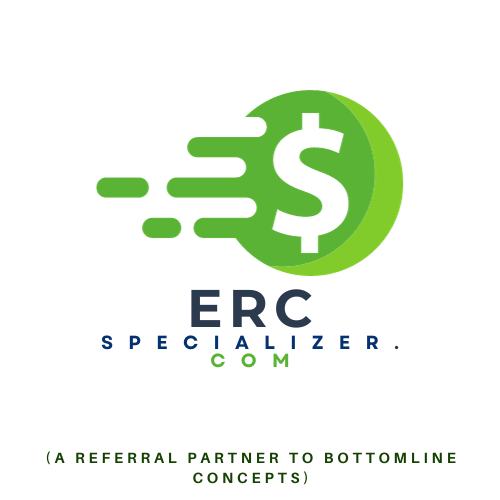The world of healthcare can be a labyrinth of complex terms and bewildering options. One of the key components of the Affordable Care Act (ACA) is the mandate for health insurance providers to offer Essential Health Benefits (EHBs) within their Qualified Health Plans (QHPs). In this article, we’ll delve into the intricacies of QHP expenses, the importance of Essential Health Benefits, and how they affect individuals and businesses seeking comprehensive health coverage.
Understanding Essential Health Benefits (EHBs)
What are Essential Health Benefits (EHBs)?
According to the ACA, all health insurance plans must provide a set of fundamental healthcare services known as Essential Health Benefits. These benefits were established to ensure that individuals and families have access to necessary medical services without the risk of being underinsured. The EHBs cover a range of services, including:
- Ambulatory Patient Services: Outpatient care is a fundamental part of EHBs, encompassing doctor’s visits, preventive care, and outpatient surgeries.
- Emergency Services: Coverage for emergency medical services, including ambulance services and emergency room visits, is a critical part of the EHB package.
- Hospitalization: Inpatient care, including surgeries, hospital stays, and associated medical services, is included.
- Maternity and Newborn Care: Prenatal, childbirth, and postnatal care are essential aspects of EHBs, ensuring comprehensive support for growing families.
- Mental Health and Substance Use Disorder Services: Coverage for mental health treatment, counseling, and addiction treatment services is an integral part of the package.
- Prescription Drugs: Access to necessary medications is a key feature of EHBs, guaranteeing that individuals can afford vital prescriptions.
- Rehabilitative and Habilitative Services and Devices: Coverage for rehabilitation services and devices, such as physical therapy, is included.
- Laboratory Services: Diagnostic tests and laboratory services are essential for identifying and managing medical conditions.
- Preventive and Wellness Services: Preventive care, vaccinations, and screenings are covered to promote overall well-being.
- Pediatric Services: Essential health benefits also encompass pediatric care, including well-child visits and dental and vision care for children.
These benefits collectively provide comprehensive healthcare coverage, ensuring that individuals and families have access to a wide range of essential services.
The Significance of Qualified Health Plans (QHPs)
What are Qualified Health Plans (QHPs)?
In the realm of the Health Insurance Marketplace, Qualified Health Plans (QHPs) are health insurance plans that meet specific requirements established by the Department of Health and Human Services (HHS). These plans are designed to offer comprehensive coverage and are available to individuals and businesses, including small employers.
Coverage Under QHPs
QHPs are a key element in the ACA’s efforts to make healthcare more accessible and affordable. They offer the following types of coverage:
- Monthly Premiums: QHPs require individuals and businesses to pay a monthly premium for coverage. The cost of these premiums can vary based on the plan and the individual’s or family’s needs.
- Deductibles: A deductible is the amount an individual must pay out of pocket before the insurance plan starts covering the costs. Higher deductible plans tend to have lower monthly premiums, while lower deductible plans have higher premiums.
- Copayments: Copayments are fixed amounts that individuals pay for healthcare services, such as doctor’s visits or prescription drugs.
- Coinsurance: Coinsurance refers to the percentage of healthcare costs an individual must share with the insurance provider after meeting the deductible.
The components of QHP expenses can vary greatly depending on the plan selected. When choosing a QHP, it’s essential to consider the specific benefits and costs of each plan, as well as how they align with your healthcare needs and budget.
The Intersection of EHBs and QHP Expenses
The Relationship Between EHBs and QHP Expenses
Essential Health Benefits and Qualified Health Plans are interwoven in the complex tapestry of the healthcare landscape. QHPs must include coverage for EHBs, ensuring that individuals and families have access to the necessary medical services outlined in the ACA.
Premium Tax Credits and Cost-Sharing Reductions
For individuals and families seeking affordable healthcare coverage, the ACA offers premium tax credits and cost-sharing reductions. These subsidies are designed to make QHPs more accessible and affordable. Premium tax credits help lower the monthly premium costs, while cost-sharing reductions reduce out-of-pocket expenses for eligible individuals.
The Importance of EHBs for Individuals
Ensuring Comprehensive Coverage
For individuals, the presence of Essential Health Benefits within their QHP is vital. These benefits guarantee comprehensive coverage for a wide range of medical services. By including EHBs, individuals can rest assured that they have access to necessary healthcare services, from preventive care to maternity and newborn care, mental health services, and prescription drugs.
Avoiding Underinsurance
One of the most significant risks individuals face when selecting a healthcare plan is the possibility of being underinsured. This means that their insurance coverage may not adequately protect them in the event of a significant medical issue or unexpected emergency. EHBs mitigate this risk by ensuring that key services are covered, reducing the chances of being underinsured.
The Significance of EHBs for Businesses
Supporting Employee Well-Being
For businesses, providing employees with QHPs that include Essential Health Benefits is crucial for supporting their well-being. By offering comprehensive coverage, businesses can demonstrate their commitment to the health and welfare of their employees, potentially boosting morale and productivity within the workforce.
Navigating the Complexities of Healthcare
Navigating the complexities of healthcare can be challenging for businesses, especially small employers. By understanding the significance of EHBs and the role they play within QHPs, businesses can make more informed decisions when selecting healthcare plans for their employees. This knowledge enables them to prioritize the well-being of their workforce while managing costs effectively.
Considering Different QHP Options
Comparing QHPs
When considering different QHP options, it’s essential to assess each plan’s coverage, costs, and network of healthcare providers. Evaluating these factors allows individuals and businesses to determine which plan best suits their specific needs and budget.
Understanding the Fine Print
Carefully examining the details of each QHP is critical. This includes understanding the limitations and exclusions of coverage, as well as any additional benefits or services offered. Paying attention to the fine print can prevent unexpected costs and ensure that the selected plan adequately meets the healthcare requirements of individuals and businesses.
Staying Informed and Empowered
Remaining Updated on Healthcare Policies
Given the ever-evolving nature of healthcare policies and regulations, staying informed is key. Regularly monitoring updates and changes in the healthcare landscape can help individuals and businesses stay ahead of any shifts that might impact their healthcare coverage and expenses.
Empowering Individuals and Businesses
Empowering individuals and businesses to make informed decisions about their healthcare is essential. This can be achieved through educational resources, workshops, and seminars that provide insights into navigating the intricacies of the healthcare system. By fostering a deeper understanding of healthcare options, individuals and businesses can make choices that align with their specific needs and goals.
Conclusion
In the intricate world of healthcare, Qualified Health Plan (QHP) expenses and Essential Health Benefits (EHBs) play a vital role in ensuring comprehensive and accessible coverage for individuals and businesses alike. By understanding the significance of EHBs and the relationship between EHBs and QHP expenses, individuals and businesses can make informed decisions when selecting healthcare plans. Staying updated on healthcare policies and remaining empowered through education are key factors in navigating the complexities of the healthcare landscape and ensuring that everyone has access to the healthcare services they need.
In the pursuit of a healthier and more secure future, it is crucial for individuals and businesses to prioritize comprehensive healthcare coverage, making the most of the options available and understanding the impact of QHP expenses and EHBs on their overall well-being and financial stability.

